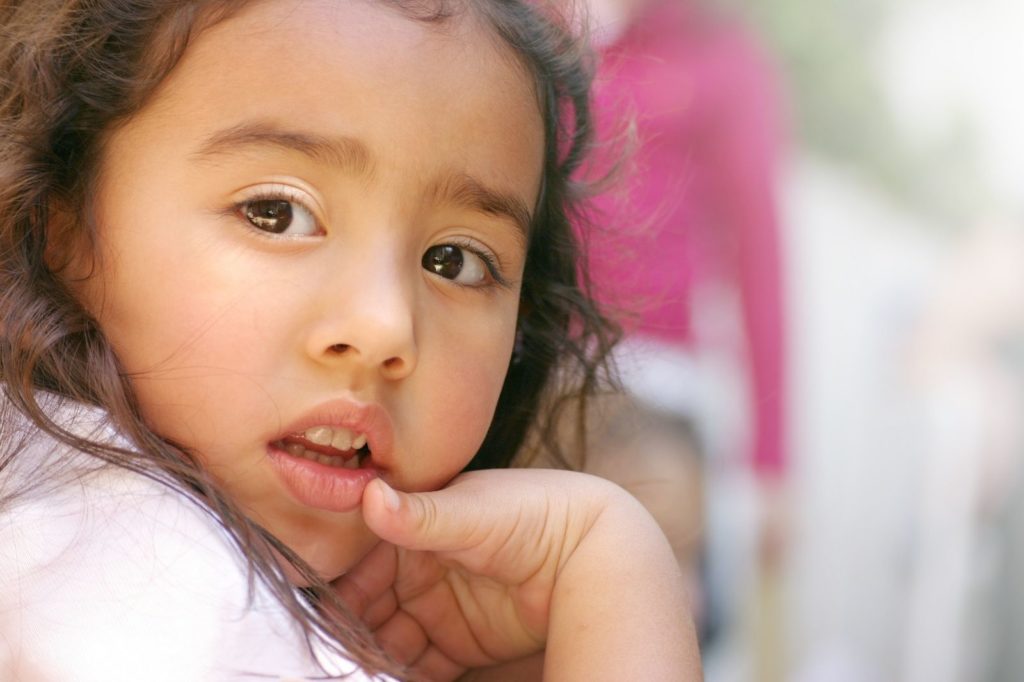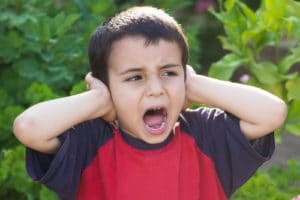With more attention from media and increased public awareness, caregivers are increasingly concerned about the possibility that their child is autistic. Before jumping into addressing that concern, let’s review the history and diagnosis of Autism Spectrum Disorder for some background context.
the history of autism spectrum disorder
The word “autism” first emerged in the literature in 1911 when a Swiss psychiatrist used it to describe his schizophrenic patients. Until the 1970s, the terms autism, “psychosis” and “childhood schizophrenia” were used interchangeably. In 1979, autism and schizophrenia were differentiated in the literature when Eric Schopler published an article explaining the distinction. At this time, more and more interest on the subject arose and old ideas about autism being caused by “refrigerator mothers” was replaced with an explanation that involved biology and science. In the 1980’s, research began to focus on the brain activity of children with autism and the 1990’s began to focus on the role of genetics. Autism first appeared as a separate disorder in the 1980’s, was revised and broadened in 1987, then narrowed again in 1994. The most current diagnosis (DSM-5, 2013) includes a broad category of “Autism Spectrum Disorders (ASD)” (Sole-Smith, 2015). The older diagnosis of Asperger’s Syndrome was discontinued and children who fell under that diagnosis were placed under the umbrella of ASD.
Currently, the diagnosis of ASD is considered a “family of neurodevelopmental disorders” (Wöhr & Scattoni, 2013) that manifests before age three and involves “(A) Persistent deficits in social communication and social interaction across multiple contexts and (B) Restricted, repetitive patterns of behavior, interests, or activities that cause clinically significant impairment in social, occupational, or other important areas of current functioning” (American Psychiatric Association, 2013). A diagnosis includes specifying the severity level of deficits in both domains (Social Communication and Restrictive and Repetitive Behavior).
is autism on the rise?
Another common question relates to whether or not autism is on the rise. Epidemiological research shows that early estimates of ASD were 4 children out of 10,000. Currently, the prevalence rate as reported by the Center for Disease Control and Prevention (CDC, 2018) is 1 in 59 children. Many people attribute this increase to a combination of factors such as a broader diagnosis and increased public awareness. However, due to limited knowledge about the exact causes of ASD and the inability to accurately perform historical research, one cannot rule out the possibility that Autism Spectrum Disorders could be on the rise.
what are red flags of asd?
Autism is a complex disorder and one child with ASD may present entirely different than another child with ASD (hence the importance of an individualized evaluation). That said, there are some signs and symptoms that may warrant further evaluation to determine if these behaviors are the result of ASD. According to the CDC, these include:
- Not responding to their name by 1 year
- Not using nonverbal gestures (pointing, waving) to objects OR not responding to other’s nonverbal gestures
- Not engaging in pretend play by age 1.5 years
- Making limited eye-contact and preferring to be alone
- Seeming unaware of others and their own emotions or feelings
- Having delayed speech and language
- Repeating words or phrases (this is called echolalia)
- Being overly interested in restricted topics (watching the same episode of Thomas the Train over and over)
- Being upset by transitions or minor changes
- Engaging in hand flapping, body rocking, spinning, or other stereotyped motor movements
- Reacting unusually to sensory experiences (tastes, sounds, smells, appearance, or texture)
- Shows no interests in others preferences
- Only interacts socially to accomplish a goal
- Avoids social contact
- Neglects social rules about personal space and boundaries
- Has flat, constricted, or inappropriate facial expressions
- Uses flat, high-pitched, or robotic speech
- Reverses pronouns (says you instead of I)
- Doesn’t seem to understand jokes or sarcasm
- Lining toys up or insisting objects be placed in a particular way
- Overly focused on parts of objects (watching the wheels of a toy car spin over and over rather than playing with the car)
- Insisting on routine (disruptions in routine lead to tantrums)
Some of the signs listed above may also occur due to other difficulties, such as a developmental delays, a speech or language disorder, or another neurodevelopmental or mental health disorder; additionally, children with ASD may also have additional mental health concerns. It is possible that a child has both ASD and AD/HD. It is also possible that a child who is flagged as having ASD actually has a speech and language disorder and is becoming frustrated by their inability to communicate their needs effectively. The best way to clarify the diagnostic presentation is through an evaluation with a developmental pediatrician, a child psychologist, or some other specialist who is familiar with autism diagnostics.
case examples
Given the broad range of presentations in ASD and the varying levels of severity, let’s look at some case examples with diagnostic data.
Let’s start with this example. A 14-year-old boy, named Jacob, diagnosed with Autism Spectrum Disorder with the specifiers (severity levels) of Level 1— Social Communication and Level 1— Restricted and Repetitive Behaviors. His parent’s primary concern was that he does not seem able to conform to classroom rules, gets into trouble for talking out of turn, and makes comments that offend others without understanding how such comments are inappropriate. His presentation was observed and he demonstrated generally flat affect, limited eye contact, excessive talking, and limited interest into others’ experiences. He has a reportedly close relationship with his parents but they stated he lacks social awareness and becomes “stuck” on preferred topics and activities. His friendships are okay as long as they revolve around his interest in video gaming. Intellectually, he performs a little bit below others but has some strength related to solving problems that rely on abstract logic (e.g., he can provide elaborate details on the similarities between different gaming theories and is generally able to understand how concepts relate to one another). He really struggles when he has to quickly perform tasks that require eye-hand coordination, which has negatively impacted his ability to enjoy many sports and also interfere with his ability to quickly take notes in class. Other possible diagnoses, such as anxiety and attention deficit/ hyperactivity disorder, were ruled out by an evaluation. His treatment needs will require minimal support to help him function.
Now, let’s do another example. An 11-year-old girl named Jana, diagnosed with Autism Spectrum Disorder with the specifiers (severity levels) of Level 3- Social Communication and Level 3- Restricted and Repetitive Behaviors. Her parents reported primary concerns regarding her behavior, which can be very violent towards herself and others. They also reported concern relating to her obsession with YouTube videos about beanie babies, which is the only activity she will participate in without becoming dysresgulated. She is especially fascinated by one clip that shows a beanie baby being tossed up and down over and over. She has an IEP and is placed in special education, under the eligibility of Autism. Her parents reported that they are having a very difficult time parenting her, and that it is negatively impacting their marriage. Her daily living skills are below expected for her age and she requires the same amount of parental guidance as her 7-year-old sibling. She refuses to eat anything soft and covers her ears anytime someone uses a vacuum cleaner, hand dryer, or makes a loud noise. When she is upset, she rarely seeks out comfort from others. Other possible diagnoses, such as intellectual disability, pervasive developmental delay, and traumatic stress were ruled out by an evaluation. Ultimately, it was determined she has several difficulties related to her ASD, and will likely need very substantial interventions to help her function.
Based on these case examples, you should be able to see that there is no one profile of a child with autism. Because of this, there is also not one particular treatment that will work best for all children with autism. Again, this highlights the importance of finding the best fit for the child given their needs and abilities.
how can i get an evaluation?
Sharing concerns with your child’s primary care physician is one way to get the ball rolling. Most pediatricians are trained to screen for ASD as part of their wellness check-ups. Alternatively, schools may be a resource if you have concerns and they may be able to direct you to providers. A trained clinician will likely be the person who will determine if your child meets criteria for ASD through a comprehensive evaluation. An ideal evaluation consists of a battery of tests including several components: an ASD screener, parent/caregiver interview, cognitive and developmental testing, personality testing, speech and language testing, observational assessment, adaptive functioning assessment, sensory and motor testing, and measures of executive functioning. This comprehensive evaluation leads to individualized results, which would then inform symptom severity and ultimately inform treatment. Diagnosis informs treatment and opens up a world of resources for those who might benefit.
then what?
There are several treatments and treatment combinations that can be used in the treatment of ASD and the process of matching a child to the appropriate therapy can be overwhelming. This process is especially made difficult by barriers such as insurance coverage, treatment availability, and clinicians who do not stay up to date on new treatment options. This is an evolving field and interventions are continually being developed. Similar to other providers, it is important for families to do some research and find providers that are a good fit for their family needs and who stay current on autism research. Broadly speaking, the following recommendations commonly follow a diagnosis of autism spectrum disorder:
- caregiver psychoeducation,
- autism specific intervention,
- ·occupational therapy,
- speech therapy,
- assistive technology,
- academic accommodations (e.g., IEP, 504 Plan, Educational Therapist, School Advocate),
- psychiatric evaluation (especially when co-morbid diagnoses are present),
- sleep hygiene,
- consistency across settings,
- Comparative Genomic Hybridization (CGH) microarray testing and analysis, and
- maintenance of general medical appointments.
If you need help figuring out where to begin, our free guidebook for parents can direct you through the process and answer some of your big picture questions.
where can i learn more about asd?
- http://www.nationalautismcenter.org/resources/
- https://www.autismspeaks.org/what-autism/diagnosis/dsm-5-diagnostic-criteria
- https://www.autismspeaks.org/family-services/tool-kits/100-day-kithttps://www.autismspeaks.org
- http://www.autism-society.org
- http://www.autism.com
- https://www.cdc.gov/ncbddd/autism/signs.html
- http://autismsciencefoundation.org
- http://www.asha.org
- http://www.neurodiversity.com
- http://the-art-of-autism.com










